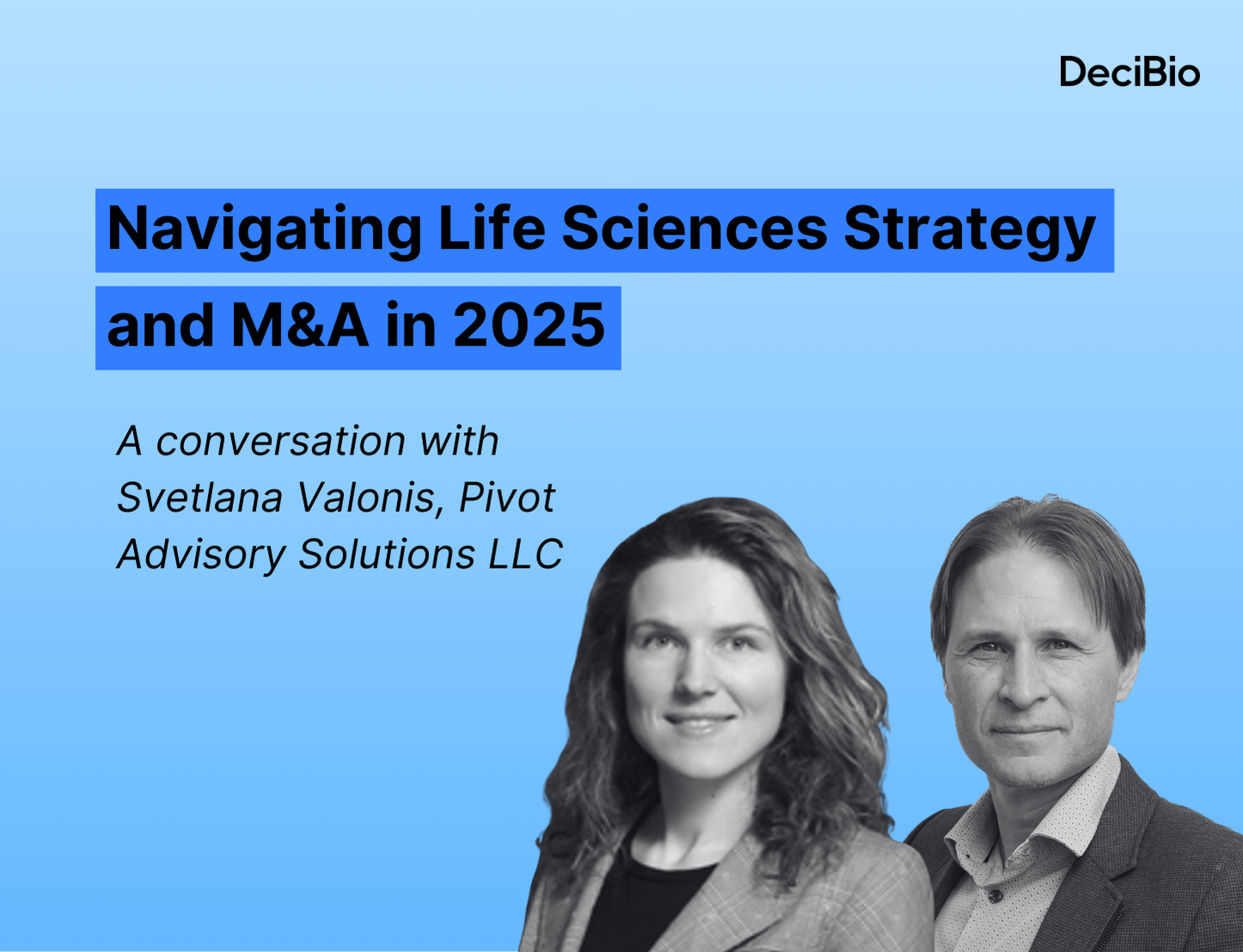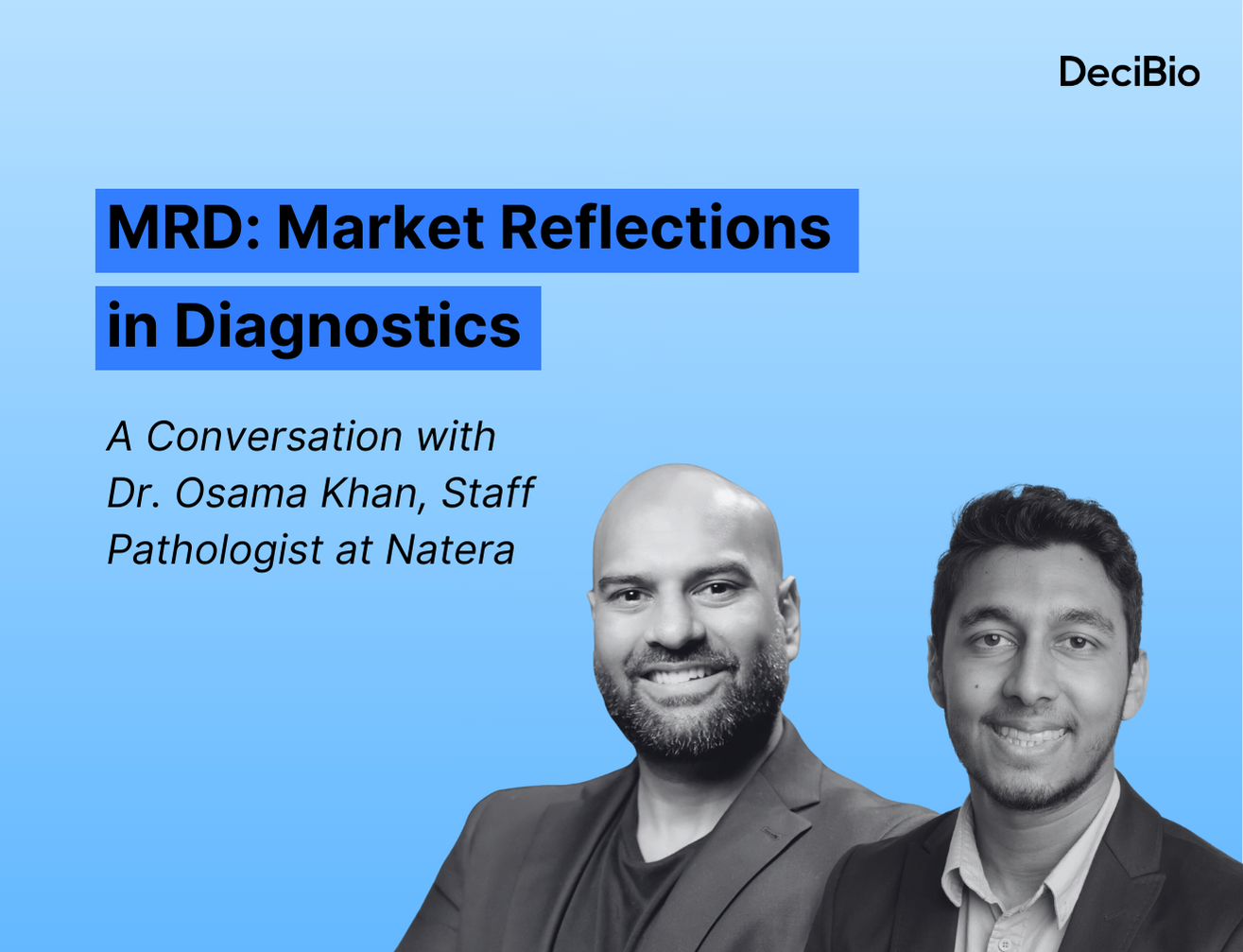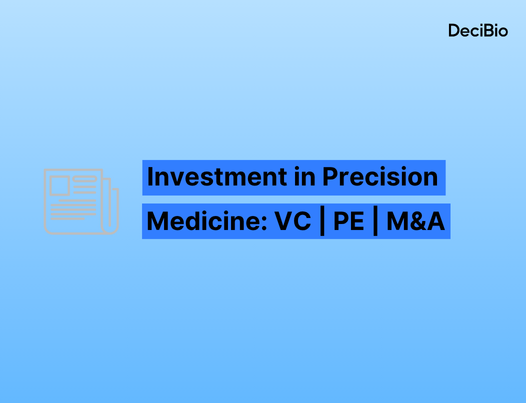Los Angeles, September 29, 2025 - A conversation between Stephane Budel, Founding Partner at DeciBio Consulting, and Svetlana Valonis, strategy and M&A executive and advisor at Pivot Advisory Solutions LLC
Stephane: Svetlana, thanks for your time. Let’s start with your background. You’ve seen this industry from multiple angles: consulting, corporate strategy, M&A integration. How do those experiences shape the way you look at today’s market?
Svetlana: In my most recent role as AVP of Enterprise Strategy & Planning at Agilent Technologies, I focused on both organic and inorganic growth strategy. Before that, I led M&A integration at a PE-backed healthcare technology company through several acquisitions. Earlier, I spent over a decade in Big Four consulting, advising Fortune 500 and PE clients on growth strategy, transformation and complex deals.
That range of experience has given me a perspective on how strategy, operations, and M&A interlock. Today, in my advisory work, I see companies being challenged with navigating fast-moving change, from AI adoption, regulatory shifts, and macro uncertainty all at once.
Stephane: We’ve been hearing a lot from clients about capital discipline. How to “do more with less” while keeping innovation alive. From your vantage point, what are the strategic challenges executives are wrestling with most?
Svetlana: The balancing act is real. Regulatory and pricing pressures, patent cliff, funding issues, and economic uncertainty are among the key factors that are affecting decision-making of the industry participants. Companies are looking for accelerate innovation, but they can’t afford to chase everything. What I see working is:
- Diversification across select therapeutic areas and technologies.
- Prioritization of later-stage assets, where risk is lower.
- Use of fail-fast approaches that reallocate capital quickly.
And AI is no longer optional. It’s becoming the lever to drive R&D productivity, automate workflows, and cut costs. To offset funding gaps, companies are leaning heavily on partnerships with peers, academia, and AI players. These arrangements provide for risk sharing and faster time to market. Interestingly, partnerships have been increasingly focused on later-stage assets, indicating de-risking of pipelines.
Stephane: That mirrors what we’ve seen. Biopharma pipelines are shifting the same way. It feels like capital scarcity is reshaping innovation strategy across the board. Let’s talk growth. We often see diagnostics and tools companies asking: “Do we build, partner, or buy?” What are you seeing on the inorganic side?
Svetlana: Life science companies are focusing on pipeline expansion in high-growth areas, market access enhancement, digital transformation and operational efficiency gains. Achieving this solely through organic means can be too slow, particularly considering the rapid pace of innovation and changing market dynamics in the industry.
Inorganic growth remains essential. Acquisitions can accelerate market entry, diversify revenue streams, and secure digital capabilities. However, that requires a strategic fit and proactive target cultivation. Needless to say, transaction potential for success also depends on timing and access to capital. In a higher interest rate environment post-pandemic, M&A activity slowed. Now, with monetary policy easing and signs of biotech market recovery, I expect deal activity to pick up.
Stephane: I like that framing; buying optionality only works if you’ve laid the groundwork early. Too many players wait until they need a deal, and by then, it’s too late. Where do you see real strategic fit emerging in M&A right now?
Svetlana: Today’s M&A market continues to be challenged by economic and trade uncertainty, and high cost of capital. Diagnostics and healthcare technology are the areas to watch. In diagnostics especially, companies are racing to secure AI platforms, molecular tools, and proprietary datasets.
Recent examples illustrate the trend:
- GE Healthcare acquiring Icometrix to integrate AI-powered neuroimaging directly into MRI workflows.
- Qiagen acquiring Genoox to strengthen its genomics interpretation capabilities.
Data platforms with proprietary datasets are commanding higher multiples than pure SaaS, given their defensibility. Recent activity has heavily focused on strategic bolt-on deals. Looking ahead, AI and digital transformation will continue to drive the M&A agenda.
Stephane: That resonates. We’ve argued diagnostics are the “unloved growth engine” of precision medicine. These deals are proof that strategic buyers are catching on. What about private markets? Both PE and VC seem to be recalibrating.
Svetlana: Deal volume in PE-sponsored transactions is lower than last year, though valuations have held up. Firms are extending exit timelines which results in portfolio congestion but also opens opportunities for corporates.
On the venture side, capital has pulled back from early science and is disproportionately flowing to AI. Startup valuations are climbing, signaling IPO readiness. With capital markets thawing and new tax incentives, I expect IPOs and R&D investment to rebound.
Stephane: That’s a dynamic we’re tracking too. For corporates, the window to act before PE cycles reset could be a real opportunity. To close us out, if you were advising a CEO today, what’s the one thing you’d tell them to prioritize for long-term success?
Svetlana: Strategic clarity and flexibility. The winners will:
- Double down on defensible capabilities, like data assets and AI that can drive growth and cost reduction.
- Combine capital allocation discipline with dynamic portfolio optimization, balancing near-term revenue with longer-term strategic bets.
- Build in operating model optionality through collaborative ecosystems of partners, and proactive M&A cultivation.
That’s how you can position your company to capitalize on strategic opportunities and enhance competitive advantage amidst market shifts.
Stephane: Couldn’t agree more. It’s about setting the playbook for where the market is going, not where it is today. Thanks for your time, Svetlana – it’s always great to catch up!
_______________________
Note: Some of the companies listed in this article may be DeciBio Consulting clients.
Author: Stephane Budel, Partners at DeciBio Consulting, LLC
Connect with Stephane on LinkedIn



.png)




